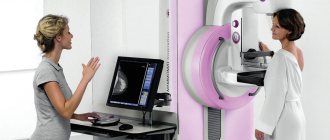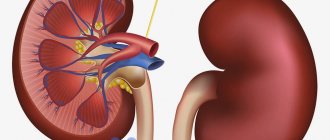- Why does pressure change when body position changes?
- Signs of orthostatic hypotension
- Tachycardia due to orthostatic hypotension
- When does orthostatic hypotension occur?
- Diagnostics
- Dysregulation of pressure in autonomic dysfunction
- Signs of autonomic dysfunction
- Treatment of the disease
- Medications
Orthostatic hypotension is also called postural hypotension.
The name "orthostatic collapse" is also used. This condition is characterized by a drop in blood pressure (BP) when a person assumes an upright position. This diagnosis is established if systolic pressure drops by 20 mmHg or more, and diastolic pressure by 10 mmHg or more, and this condition persists for three or more minutes. Elderly people, patients with neurological diseases, and people who have been on bed rest for a long time are most susceptible to pathology. According to statistics, 20% of older people, including those with high blood pressure, are diagnosed with orthostatic hypotension.
You should be aware that postural hypotension is not classified as a separate disease. This is a pathological condition that indicates a circulatory disorder. This phenomenon occurs against the background of various diseases and can occur periodically or be permanent. If there are signs of postural hypotension, it is necessary to identify its cause and eliminate it. This condition negatively affects the functioning of the heart and contributes to the development of cardiovascular diseases.
Why does pressure change when body position changes?
When a person stands up abruptly, a large amount of blood enters the vessels of the lower extremities. Its volume can reach one liter. In this case, venous return decreases and cardiac output decreases, which causes hypotension. This is a normal physiological process that occurs even in healthy people.
The sympathetic nervous system is responsible for normalizing blood pressure when changing body position. A person’s pulse reflexively quickens and vascular tone increases. Thanks to this, the pressure immediately returns to normal. In healthy people, when taking an upright position, the pathological signs characteristic of hypotension do not appear or go almost unnoticed.
If a person remains in a lying position for a long time, due to natural compensation mechanisms, the production of vasopressin increases. Its effect helps increase the volume of circulating blood.
LITERATURE
- 1. Assessment: clinical autonomic testing report of the Therapeutics and Technology Assessment Subcommittee of the American Academy of Neurology. Neurology 1996;46:873-880.
- 2. Bradley JG, Davis KA. Orthostatic hypotension. Am Fam Physician. 2003 Dec 15;68(12):2393-8.
- 3. Fouad-Tarazi FM, Okabe M, Goren H. Alpha sympathomimetic treatment of autonomic insufficiency with orthostatic hypotension. Am J Med 1995;99:604-610.
- 4. Freeman R. Treatment of orthostatic hypotension. Semin Neurol 2003;23:435-442.
- 5. Gibbons CH, Freeman R. Delayed orthostatic hypotension: a frequent cause of orthostatic intolerance. Neurology 2006;67:28-32.
- 6. Gupta D, Nair MD. Neurogenic orthostatic hypotension: chasing “the fall”. Postgrad Med J 2008 Jan;84(987):6-14.
- 7. Lahrmann H, Cortelli P, Hilz M, Mathias CJ, Struhal W, Tassinari M. EFNS guidelines on the diagnosis and management of orthostatic hypotension. Eur J Neurol 2006;13:930-936.
- 8. Low PA, Singer W. Management of neurogenic orthostatic hypotension: an update. Lancet Neurol. 2008 May;7(5):451-8.
- 9. Low PA, Vernino S, Suarez G. Autonomic dysfunction in peripheral nerve disease. Muscle Nerve 2003;27:646-661.
- 10. Maule S, Papotti G, Naso D, Magnino C, Testa E, Veglio F. Orthostatic hypotension: evaluation and treatment. Cardiovasc Hematol Disord Drug Targets. 2007 Mar;7(1):63-70.
- 11. Smit AA, Halliwill JR, Low PA, Wieling W. Pathophysiological basis of orthostatic hypotension in autonomic failure. J Physiol 1999;519:1-10.
- 12. Wieling W, Krediet CT, van Dijk N, Linzer M, Tschakovsky ME. Initial orthostatic hypotension: review of a forgotten condition. Clin Sci (Lond) 2007;112:157-165.
Signs of orthostatic hypotension
Pathology manifests itself:
- severe weakness;
- dizziness;
- impaired coordination of movements, loss of balance;
- short-term visual impairment.
If symptoms are severe, the patient may fall due to loss of balance. In some people, convulsions are added to these symptoms. As a rule, the manifestations of pressure fluctuations are more pronounced after a heavy meal or physical activity.
The duration of symptoms depends on the severity of the condition. In some patients, signs of blood pressure dysregulation last for several minutes; for others, everything goes away in seconds. In severe cases, the patient has to take a horizontal position, as standing he feels bad.
Tachycardia due to orthostatic hypotension
Patients may experience a significant increase in heart rate. This phenomenon is called postural tachycardia. The heart rate increases to 120 or more beats per minute. If a person’s pulse accelerates by more than 30 beats when changing body position, then this is also postural tachycardia.
In some patients, increased heart rate is accompanied by dizziness and weakness, but the pressure is reduced slightly or remains normal. Experts still have not figured out what causes this condition.
Symptoms of hypotension
The main symptom of hypotension is a decrease in blood pressure to 90/60 mm Hg. Art. or lower. Each person can measure their blood pressure independently at home using a tonometer. In addition, signs indicating arterial hypotension include the following:
- feeling of general weakness, lethargy, drowsiness;
- increased sweating;
- disturbances in heat exchange processes (cold extremities);
- increased heart rate;
- sleep disorders;
- emotional instability (periods of irritability, apathy);
- dizziness and headache (mostly dull in the frontal and temporal regions);
- aching pain in the heart;
- dyspnea.
Sometimes hypotension can manifest itself as fainting, especially in rooms where there is little fresh air. In general, people with low blood pressure react negatively to changes in air temperature, changes in air humidity, as well as to various emotional stimuli. Isolated cases of these symptoms may not indicate the presence of hypotension, but if there are several symptoms and they are constant, then you should consult a doctor.
When does orthostatic hypotension occur?
The cause of the pathology is considered in the context of the patient’s age, his state of health, and past illnesses. Acute postural hypotension can be caused by:
- hypovolemia - a condition in which the body lacks sodium and the water-electrolyte balance is disturbed;
- taking medications;
- long periods of lying down;
- decreased adrenal function.
If the pathology is chronic, the causes may be age-related changes and various disorders in the functioning of the autonomic nervous system. If the patient regularly takes medications, he may experience side effects, which are manifested by a decrease in blood pressure.
Experts included postprandial orthostatic hypotension into a separate category. It appears after the patient eats a large amount of foods high in carbohydrates. The pancreas produces a lot of insulin, and blood accumulates in the gastrointestinal tract.
Pharmacotherapy
In the table 4 doses and side effects of drugs are given that are associated with orthostatic hypotension. The goal of treatment is to control symptoms, not to restore normotension.
Prescription of the synthetic mineralocorticoid 9-α-fluorohydrocortisone (fludrocortisone acetate) may be useful in patients in whom the plasma volume does not increase with an increased volume of salt or water. The loss of salt and the increase in plasma volume to normal is obvious with a dry stagnation of the agent, although in this case the presorbent effect persists due to the growth of the peripheral vascular support.
Some neurogenic orthostatic hypotension is largely due to the insufficient vision of norepinephrine by sympathetic neurons, which is why adrenergic drugs are key in ill patients, in which symptoms are not controlled by other means. The peripheral selective α1-agonist midodrine is a widely praised drug for the treatment of orthostatic hypotension. Single-blind, multi-center, placebo-controlled studies have shown that this agent is associated with significant increases in AT in upright people and decreased symptoms of illness.
Mixed α-agonists that act directly on α-adrenergic receptors and displace norepinephrine from postganglionic sympathetic neurons include ephedrine and its stereoisomer pseudoephedrine. These agents stimulate α-, β1- and β2-adrenergic receptors, and this action is also associated with a vasodilatory effect, which weakens the swelling. A number of studies were carried out to determine the effects of various α-adrenergic receptor agonists. In a small study, midodrine at an average dose of 8.4 mg trice per day increased AT indicators in patients with erect and orthostatic tolerance, which was much more reliable, while ephedrine at an average dose of 22.3 mg trice per day.
Other agents can be seen in cases of seizures if the symptoms do not respond to medications. The evidence for their validity comes from even small single-center studies.
Postural release of arginine-vasopressin decreases in some patients due to autonomic failure, secondary to the central neurodegenerative process from the death of vasopressin neurons of the supraciscus nucleus of the hypothalamus. An analogue of this hormone, desmopressin acetate, can be administered to additionally increase the volume of the circulating fluid and reduce nighttime urine output.
Erythropoietin promotes AT in a vertical position, and controlled studies have shown that there is increased orthostatic tolerance in orthostatic hypotension and anemia, along with normochromic normocytic anemia. The mechanism of this presor effect is unknown, but most likely involves a shift in the erythrocyte mass and central AT, changes in blood viscosity and neurohumoral effects of the vessel wall.
In clinical studies, the anticholinesterase drug pyridostigmine demonstrated a mild, although insignificant, increase in blood pressure in patients with neurogenic orthostatic hypotension. Therapeutic treatments of this importance are those in which the suppression of acetylcholinesterase enhances sympathetic ganglion neurotransmission and this effect is maximum if the patient is in an upright position, the fragments then passing There are the strongest sympathetic nerves.
Other agents that have been used for orthostatic hypotension include COX inhibitors, β-blockers, clonidine, yohimbine, somatostatin, dihydroergotamine and dopamine receptor antagonists.
Clinical evidence and small clinical investigations give very clear results. Table 4. Types of drugs that are used in the treatment of neurogenic orthostatic hypotension
| A drug | Action mechanism | Dozuvannya | Side effects | Comment |
| Normovolemic agents | ||||
| 9-α-fluorohydrocortisone | Stimulates the release of sodium in the distal tubules and enhances the sensitivity of blood vessels to circulating catecholamines | 0.05–0.3 mg/double | Hypertension in supine position, swelling of the spine, hypokalemia, headache, rarely - persistent heart failure | Trivalium therapeutic effect; If additional potassium supplements are needed |
| Ship sound agents | ||||
| Midodrine | Direct α1-adrenergic receptor agonist | 2.5–10 mg 2–4 times per dose | Polomotor reactions, itching, hypertension in supine position, bradycardia, gastroenterological symptoms and obstruction of secrecy | A single drug approved by the FDA for the treatment of orthostatic hypotension; active metabolite is desglymidodrine; should not be taken at intervals up to 4 years before expiration |
| Pseudoephedrine | Direct and indirect (increases norepinephrine from presynaptic neurons) α1-adrenergic receptor agonist | 30–60 mg 3 times per dose | Hypertension in supine position, tachycardia, central sympathetic side effects (eg, anxiety, tremor); in rare cases - intracerebral hemorrhage, vasculitis, arrhythmias and cardiovascular side effects; Possibility of using the drug | Do not take at intervals up to 4 years before expiration |
| Ephedrine | Direct and indirect (increases norepinephrine from presynaptic neurons) α1-adrenergic receptor agonist | 25–50 mg 3 times/dobu | Hypertension in supine position, tachycardia, central sympathetic side effects (eg, anxiety, tremor); in rare cases - intracerebral hemorrhage, vasculitis, arrhythmias and cardiovascular side effects; Possibility of using the drug | Do not take at intervals up to 4 years before expiration |
| Additional agents | ||||
| Desmopresin acetate (DDAVP) | An analogue of vasopressin, which acts on V2 receptors in the collecting ducts of the narcotic tubules; increases the volume of circulating blood and changes nighttime urine output | Nasal spray, 5–40 mcg per dose; oral form, 100–800 mcg per dose | Water intoxication and hyponatremia | Close monitoring of water and electrolyte balance is required |
| Erythropoietin | Corrects normochromic normocytic anemia in autonomic failure, including erythrocyte mass and central AT; can be directly or indirectly floated onto the vessel wall | 25–75 units/kg body weight, administered 3 times daily until normal hematocrit values are achieved; Then switch to lower supportive doses | Hypertension in supine position, polycythemia; dovgotherminal rhizic (zocrema, cardiac-vascular) in this population of unknown diseases | Determine the additional requirements for the release |
| Pyridostigmine | Anticholinesterase agent that enhances sympathetic ganglion neurotransmission | 30–60 mg 3 times a day | Superior convulsions, improved peristalsis, boredom, vomiting, splanchnic spasms | The therapeutic effect is greatest in the vertical position |
Diagnostics
The main condition for eliminating pathology is determining its exact cause. The patient is prescribed:
- electrocardiogram;
- blood test for electrolytes, glucose levels, creatinine;
- analysis of thyroid hormones;
- examination by a neurologist.
When a patient takes medications, he is offered temporary withdrawal, if possible, or a reduction in the dosage of the drug. If the symptoms of orthostatic hypotension disappear, one can judge the medicinal cause of the pathology.
Dysregulation of pressure in autonomic dysfunction
A common cause of postural hypotension is disturbances in the functioning of the autonomic nervous system. It is responsible for regulating blood pressure, heart rate, maintaining body temperature and electrolyte balance, and the processes of bowel and bladder emptying.
To determine pathological conditions in the functioning of the autonomic nervous system, a tilt test is used. This examination is carried out using special equipment, thanks to which it is possible to simulate the conditions of maximum venous outflow. The technique is informative and consists of several stages:
- After a night's sleep, the patient is placed on a table with a lifting mechanism. This device is called an orthostatic table. It is equipped with a body strap.
- Next, the patient is given an intravenous catheter to supply drugs that can provoke gasovagal symptoms: nausea, decreased blood pressure, dizziness, loss of consciousness. The combination of such signs is called neurocardiogenic syncope.
- First, the subject spends a quarter of an hour in a horizontal position, then the table is raised to a vertical position. Within 45 minutes, the doctor observes changes in blood pressure, pulse, and other indicators.
The tilt test is most often performed on young people. Older patients are referred for such examination if other types of diagnostics are uninformative and there are no contraindications. These include severe cardiovascular diseases in the acute stage.
Cardiac monitors are also used to assess the functions of the autonomic nervous system.
Signs of autonomic dysfunction
With orthostatic hypotension against the background of autonomic disorders, patients note other signs of pathology. These include:
- visual impairment;
- urinary incontinence or difficulty urinating;
- constipation;
- poor heat tolerance;
- impaired coordination of movement, which causes difficulty walking;
- fatigue;
- trembling of limbs;
- decreased muscle tone;
- erectile dysfunction in men.
Some patients experience darkening of the stool due to internal bleeding.
Autonomic dysfunction and the resulting orthostatic hypotension are a consequence of a number of serious diseases. These primarily include cardiac and neurological pathologies, Parkinson's disease, diabetes, cancer, and dysfunction of the adrenal glands. People who abuse alcohol experience problems with the functioning of the autonomic nervous system.
Disease prevention
To get rid of the symptoms of hypotension, medications are not enough. Prevention is also of great importance, as it helps to minimize the symptoms of the disease. With orthostatic hypotension, the patient should be strictly prohibited from quickly jumping out of bed or chair. It is recommended to sit down slowly, sit there for a few minutes, and then slowly stand up while holding onto the furniture.
A healthy lifestyle can help normalize blood pressure:
- Eat healthy foods that are varied and nutritious. You need to eat evenly throughout the day in small portions;
- Walks in the fresh air and moderate but regular exercise;
- Move away from very hot climates or avoid very hot places altogether. This can be achieved, for example, through the use of climate control systems at home and in the office.
Also, for orthostatic hypotension, tonic drinks in moderate doses are very useful: tea and coffee. General restorative herbs and infusions of rose hips, ginseng, eleutherox and Chinese magnolia vine are not contraindicated in patients with hypotension.
Prevention during bed rest
In cases of long-term injuries or illnesses that leave the patient bedridden for a long time, it is very important to take timely measures to prevent blood pressure problems. If postural hypotension is suspected as a result of treatment and rehabilitation of an injury, exercise should be performed regularly.
In most cases, it is enough to eliminate the causes leading to a decrease in blood pressure for the patient’s condition to normalize. However, in some cases, special treatment prescribed by a doctor is required.
In parallel with getting rid of the unpleasant symptoms of hypotension, the underlying disease is treated if it causes problems with blood pressure.
Therefore, in case of bleeding, which may be caused by orthostatic hypotension, doctors prescribe therapy aimed at normalizing intravascular blood volume. If the pain was caused by side effects from your medications, your doctor may reduce your dose or replace them with a different set of medications.
If the disease has already entered the chronic stage, and especially if the patient is elderly, when developing a treatment program, the greatest emphasis is placed on eliminating factors that cause hypotension. These include, but are not limited to: Sudden rising from bed, regular drinking, and insufficient fluid intake.
Treatment of the disease
To eliminate the drop in pressure when changing body position, you need to influence the disease that led to this condition. Treatment of pathology is divided into medicinal and non-medicinal.
The patient will have to reconsider his habits. First of all, it is necessary to normalize the drinking regime, provide moderate physical activity, and give up alcohol. Physical activity improves the condition of blood vessels and has a positive effect on blood circulation.
If the patient had to constantly remain in bed, it is undesirable to spend all the time lying down. You need to get up or just sit down periodically. For elderly patients, sleeping with the head of the bed elevated is recommended.
It is important to provide the body with the right amount of sodium, which increases the volume of fluid inside the vessels. To do this, you need to take sodium supplements or increase the amount of salt in your diet. This option has contraindications if the patient has a diseased heart or kidneys. Excess sodium in the diet leads to edema.
People whose orthostatic hypotension is caused by overindulging in carbohydrates or eating large meals should reconsider their diet. It is important to reduce the amount of foods high in carbohydrates and the amount of food in general. After eating, you need to get up smoothly and avoid sudden movements.
It is also recommended to wear elastic stockings, which increase venous return.









